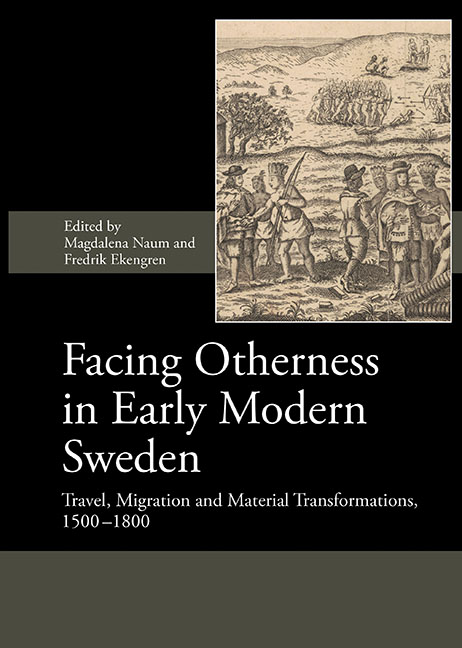Book contents
- Frontmatter
- Contents
- List of Illustrations
- List of Contributors
- Preface
- List of Abbreviations
- I Material Transformations
- Introduction
- 1 Tracing Other in 17th-Century Sweden
- 2 Houses of Wood, Houses of Stone: On Constructing a Modern Town in Early Modern Kalmar
- 3 Indigeneity, Locality, Modernity: Encounters and their Effects on Foodways in Early Modern Tornio
- 4 Brewing an Ethnic Identity: Local and Foreign Beer Brewing Traditions in 15th- to 17th-Century Sweden – an Example from Nya Lödöse
- 5 Tactile Relations: Material Entanglement between Sweden and its Colonies
- II Migration and Neighbourly Interactions
- III Overseas Travel
- IV Conclusions
- Index
2 - Houses of Wood, Houses of Stone: On Constructing a Modern Town in Early Modern Kalmar
from I - Material Transformations
Published online by Cambridge University Press: 23 July 2019
- Frontmatter
- Contents
- List of Illustrations
- List of Contributors
- Preface
- List of Abbreviations
- I Material Transformations
- Introduction
- 1 Tracing Other in 17th-Century Sweden
- 2 Houses of Wood, Houses of Stone: On Constructing a Modern Town in Early Modern Kalmar
- 3 Indigeneity, Locality, Modernity: Encounters and their Effects on Foodways in Early Modern Tornio
- 4 Brewing an Ethnic Identity: Local and Foreign Beer Brewing Traditions in 15th- to 17th-Century Sweden – an Example from Nya Lödöse
- 5 Tactile Relations: Material Entanglement between Sweden and its Colonies
- II Migration and Neighbourly Interactions
- III Overseas Travel
- IV Conclusions
- Index
Summary
The town of Kalmar was moved in the mid-17th century and rebuilt according to contemporary ideals using a modern regulated town plan. Recent archaeological excavations confirm previous hypotheses of a socially divided and hierarchically constructed town with two different housing cultures. Their existence is discussed here in terms of being part of a general effort to produce a structured and hierarchical society. The varied and contradictory currents underlying social processes in 17th-century Sweden, an openness to new global impulses, and at the same time an obsession with structuring people and space are inherent in the case of constructing the new town of Kalmar.
SOCIETY IN CHANGE – A WIDENING HORIZON?
In the period 1600–1718 Sweden was undergoing rapid change, and various aspects of the country, such as the economy, the military, administration and urban development underwent modernization. As a result the kingdom became centralized and its people hierarchically classified. Research on early modern Sweden and its transformation from a medieval society on the northern fringes of Catholic Europe to a nation with grand political ambitions is very extensive. Political history is today somewhat relegated to the background and the more specifically social aspects of society, along with Sweden's participation in globalized networks, are at the forefront of scholarly interest.
In the 17th century, the small and old-fashioned Swedish towns were in the front line of regulatory efforts. Partially, this endeavour stemmed from an awareness of a lack of the sophistication and development characteristic of other aspiring European countries, such as France and the German states. When planning for the funeral of the king Gustavus Adolphus in Stockholm, the government hesitated to invite foreign guests, since “when their ambassadors come, they will see our poverty…”. An urban policy, including regulation of the old towns, foundations of new towns, and relocation of some of the most important towns, was intended to act as a driving force for the rest of society. The massive campaign of modernizing and regulating towns on the Swedish mainland, as well as in the provinces on the Baltic Sea, has recently been studied through a large body of preserved town plans.
- Type
- Chapter
- Information
- Facing Otherness in Early Modern SwedenTravel, Migration and Material Transformations 1500–1800, pp. 27 - 46Publisher: Boydell & BrewerPrint publication year: 2018



